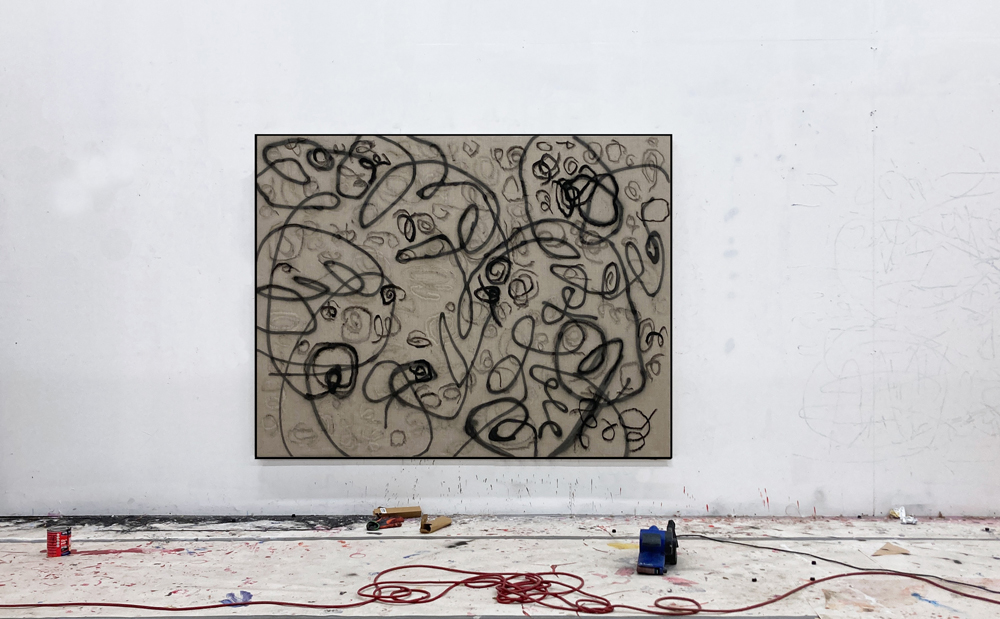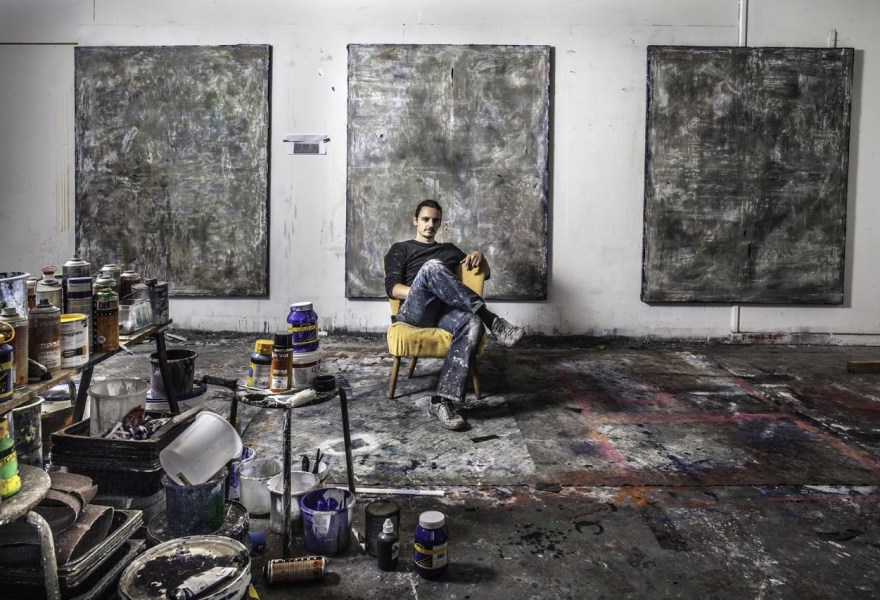30 november 2022, Oscar van Gelderen
The studio of... Gijs van Lith
What does the ideal studio look like? How much time does an artist spend in his studio? Is it a sacred place? This week in 'The artist’s studio' it’s Gijs van Lith, whose solo exhibition 'Three Legged Dog' can be seen at MPV Gallery until December 4.
Do you go to your studio every day?
I work Mondays to Fridays from 9:30 am to 6:00 pm and in the summer I go to my studio a little earlier. Usually, from 8:30 am to 4:30 pm. My studio is a small factory hall where I can work wonderfully, but it is colder in the winter so I go a little later.
What time do you leave for your studio, and how: on foot, by bicycle, public transport or car?
Every day I go by bike, it's a five minute bike ride from my house, so it's nice and close. On Mondays, I first take the children to daycare and then go to my studio. Sometimes I cycle around the block or go for a walk in the woods to clear my head. But I always end up in my studio.
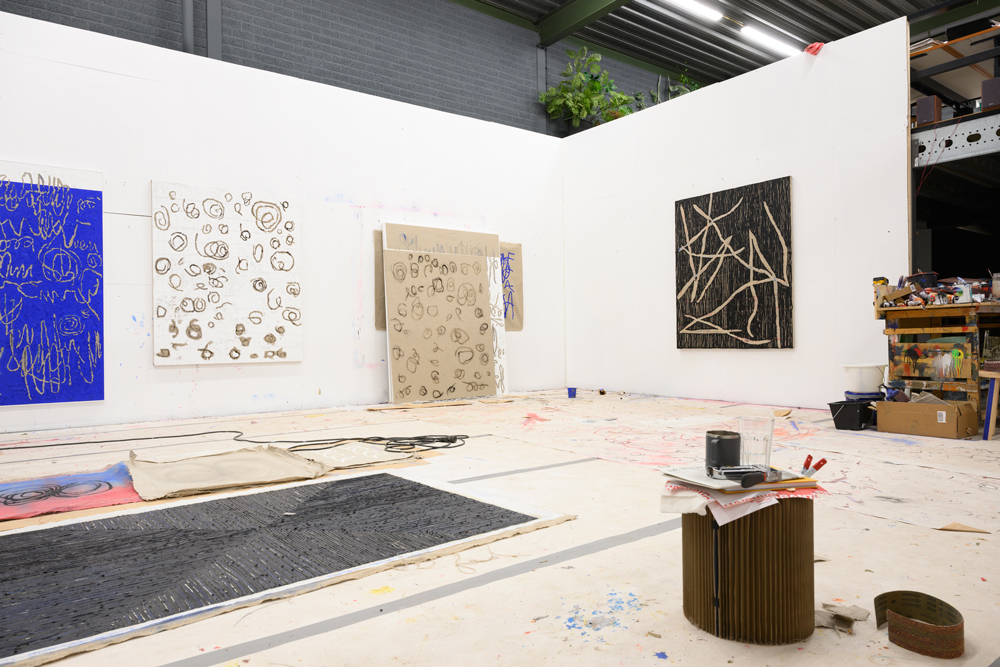
Do you keep to certain rituals in your studio? Music or silence?
Yes, rituals are important, it’s a kind of warming up for me. The first thing I do is open my shutters to let in light and fresh air. It doesn't matter if it's winter or summer, whether it's raining or the sun is shining – let the outside world in for a while. Then I make a cup of coffee and drink it slowly. From my office area I then look at my work on the ground floor. I often clap my hands and do some stretching exercises before I really start painting. In the mornings I read essays, recently I've been rereading The Wretched of the Screen by Hito Steyerl. But I'm doing something completely different now, I'm studying the work of Frank Lloyd Wright and his organic architecture. The way he connects the environment, nature and people and gives them space. I find my own interest in nature here and this is also increasingly reflected in my work. I also listen to interviews on YouTube: Sterling Ruby is a great lecturer and interviewee. My favourite is the lecture at the de la Cruz Collection where he reads an hour from a diary about a working visit to Asia (Tokyo, Beijing, Hong Kong, I believe). This lecture is a nice combination of private and work; the simple things of the day that everyone experiences when you travel a lot and for a long time, (working) visits to museums and private collections and looking back at work he made ten years ago. Ruby tells this in a way that you feel you were with him on that trip.
I like to listening podcasts. When I have to do more physical things, such as stretching paintings, I often listen to the Flemish radio station StuBru or to rap; I really like Tourist LeMC. I also play a lot of Jay Z, Chet Faker, Stromae or Nick Cave. Nice and varied and what feels right at that moment. Sometimes I don't listen to any music at all and there is only silence. I also answer emails and arrange all logistical matters together with my studio assistant.
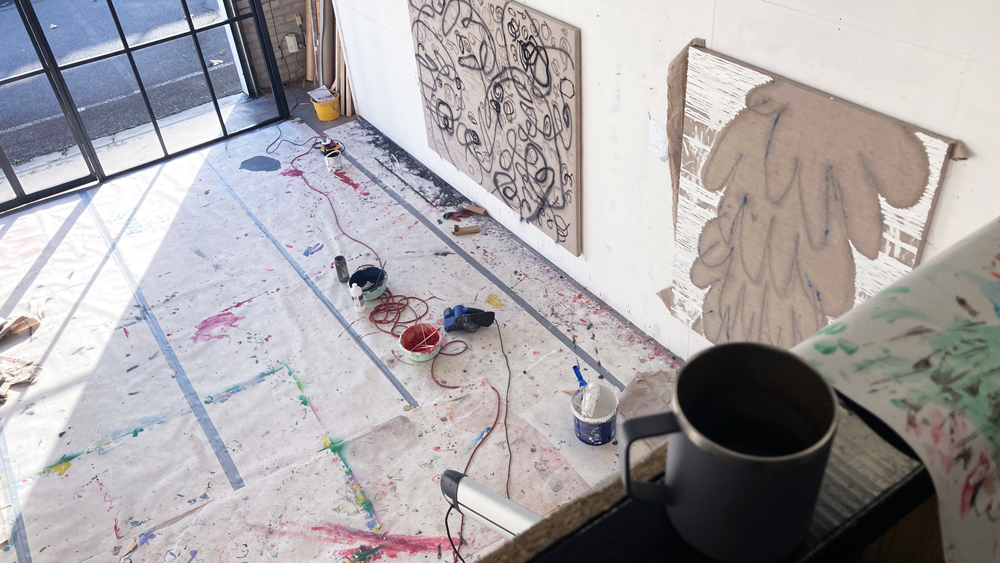
How important is light to you?
For my mood for sure. I think a window is more important to me than just light. I have fluorescent lamps, daylight and daylight fluorescent lamps and a large window frame measuring five meters wide and four meters high that lets in a lot of light and life, so that I can play with my mood. This way I can see my work in a different (day) light. This provides more insight into the painting for me.
What does your work process look like? Do you work everywhere and all the time or does work only commence the moment you enter your studio?
I paint every day and always work on multiple works at a time. In general, I also work on two series of paintings at the same time/in turn, that is about fifteen paintings per series. I have periods when I'm really in a series, a good vibe where everything falls into place, but also periods when I'm really fumbling. But you need both, as both are equally important. My studio is arranged in a way that allows me to work on one series on one wall and on the other on the other wall. I also have a nice storage space of three by ten meters, with compartments for all the paintings that are finished and the works that are going abroad. I also have an in-between space (‘the purgatory’) where there are works that I do not want to see for a while, or that have yet to dry. I always take a lot of time and wait patiently to come out with a new series. Distance is important in this process.

How much time do you spend on average per day in your studio?
Seven to eight hours.
Is your studio a sacred place?
No, it’s not a sacred place, but it is safe. Safety is important to me. This allows works to arise and develop freely and weightlessly. No judgement, a nice atmosphere where energy and curiosity are important. The atmosphere is perhaps best summed up as a kind of constructive nonchalance.
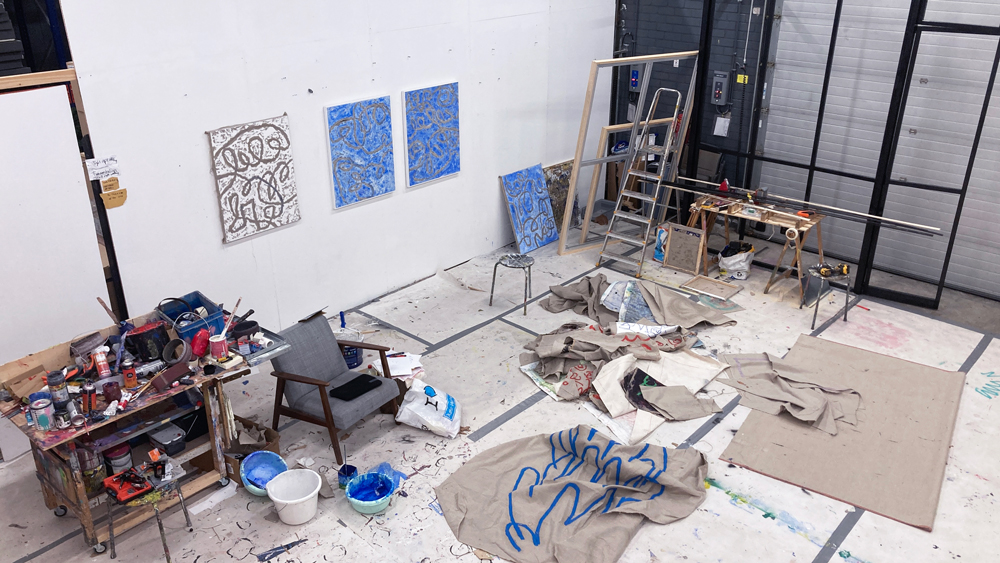
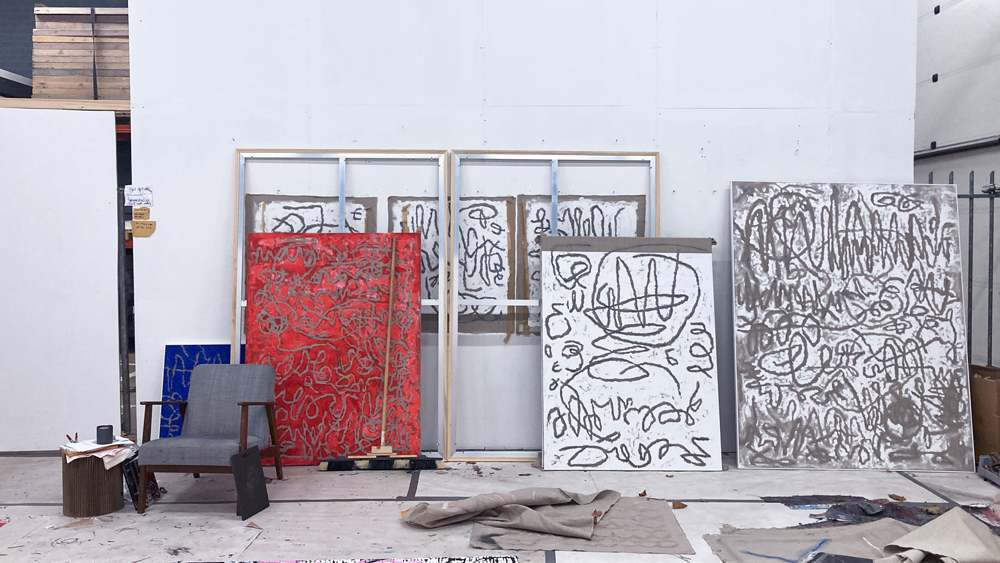
Do you receive visitors there; collectors, curators or fellow artists?
Yes, yes and yes ☺
What is the most beautiful studio you have ever seen?
I found the studios in Mallorca CCA very nice and beautiful, with high walls (and a swimming pool which was certainly not wrong), but I also liked Gerben Mulder’s New York rooftop, it’s nice and spacious and with a wonderful view over Manhattan. But to be honest, Eva Robarts' studio in New York's Chelsea was great too. Eva sat in the downstairs area of a large gallery. So I was let in by a cleaning lady and had to follow her - so as not to dirty the floor she had just mopped - to go to the basement. A very cool place and I felt a bit like a Teenage Mutant Ninja Turtle ☺
What does the ideal studio look like?
I think Henk Visch's studio with its great storage space, would be my ideal studio. But my dream studio is that of Georg Baselitz, in Ammersee. The light and nature that comes in through the window and the space itself are just phenomenal.
